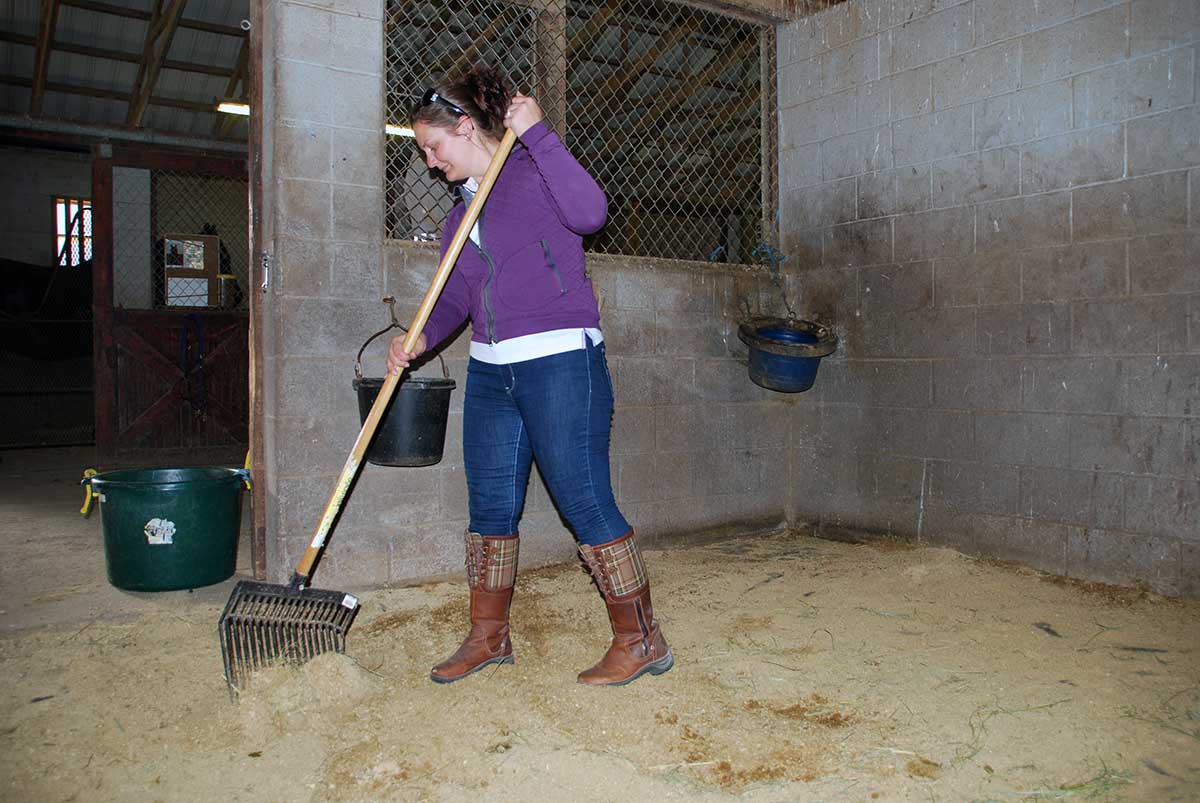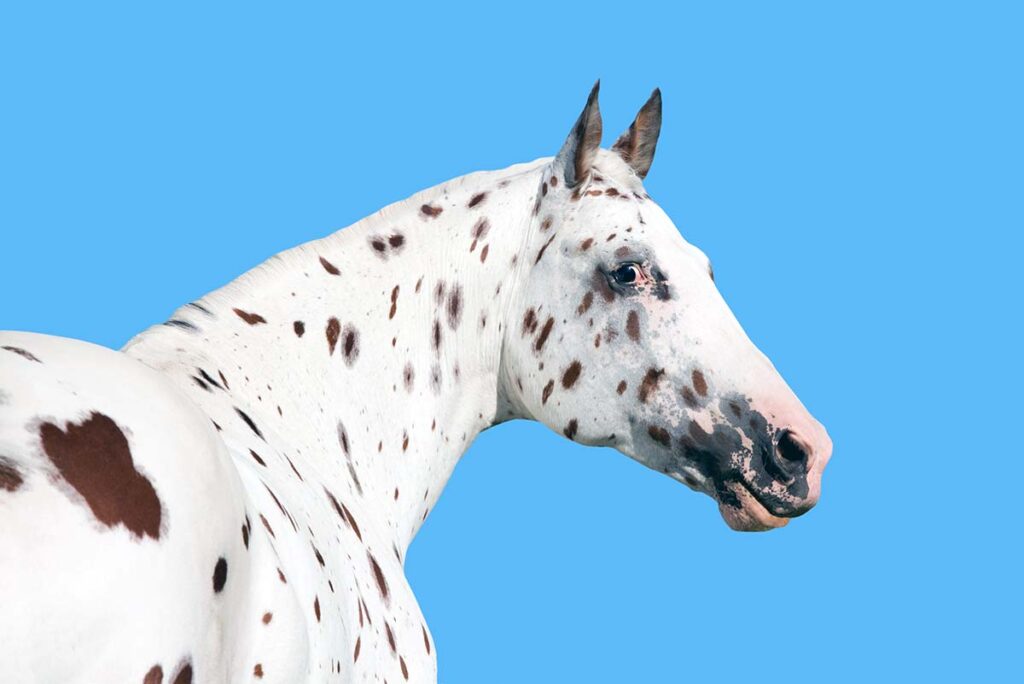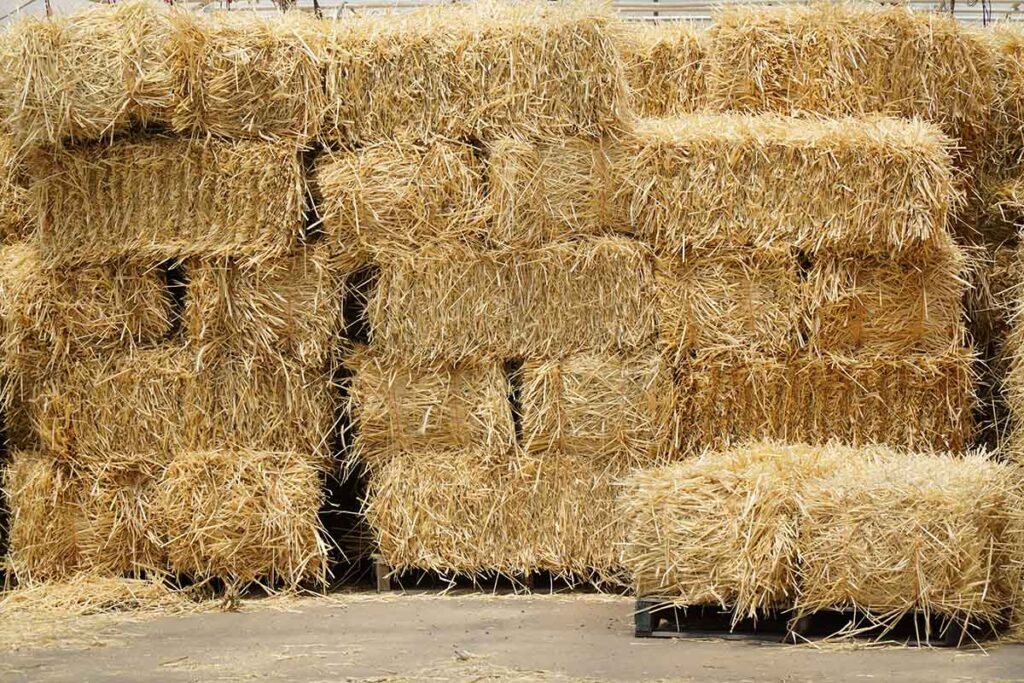If your horse spends any portion of his time in a stall, you’ll need to clean that space regularly. Cleaning not only keeps the stall sanitary for the horse’s feet and body but also safer for the horse’s (and your) respiratory tract, which is sensitive to dust and ammonia. Fortunately, with the right tools, techniques, and knowledge, anyone can become a pro at stall cleaning. In this article, we’ll guide you through everything you need to know, from preparing the stall to disposing of manure and soiled bedding. Roll up your sleeves, put on your gloves, and let’s get started!
Stall-Cleaning Essentials

Most stalls are bedded with sawdust, wood pellets, straw, or wood shavings, with or without a rubber mat below. Here are some tools you’ll need to clean a stall bedded with sawdust, wood pellets, or shavings:
- An 18-tine plastic-with-wood-handle manure fork. Some people call these Future Forks (that’s the brand name) or apple-pickers, others plastic pitchforks.
- A wheelbarrow or muck bucket, depending on whether you’re putting the muck into a manure spreader, pile, or compost bin and whether there’s a ramp to get to each.
- A metal leaf rake.
- A broom.
- A shovel.
It’s easiest (and healthiest for the horse) to clean the stall while the horse is turned out. That way, he isn’t inhaling all the airborne particulates you kick up throughout the process. It can also be easier to clean a stall that has a rubber mat as its base. While mats also present their pros and cons, they can make for quicker work, fewer holes dug in stall floors when removing wet spots, and a more comfortable surface for horses’ joints.
Stall Cleaning, Step by Step

Everyone has their own routines and preferences. However, here are some common steps you can take to clean your horse’s stall effectively and efficiently:
- Remove the water buckets and feed bucket (if it’s not the permanently installed kind), and place them in the aisle.
- Use the fork to scoop the easy-to-pick piles of manure on the surface of the bedding. Gently (but not obsessively) shake any clean bedding from the manure, then deposit it in the muck bucket. Same goes for wet/soiled hay—that can go, too.
- If your horse is messy, he will have manure mixed in with the bedding in various parts of the stall and one or two urine-soaked spots. (Some horses, especially mares, are meticulous about their stalls and will poop in one location.) Work through the stall, scooping obviously dirty—but not soaked—bedding and tossing it on the lower part of the wall (why you’ll want to remove buckets first). This causes the manure to sift out and land on top of the bedding piled along the edge of the stall. It also allows you to uncover wet spots elsewhere in the stall.
- Sift out the manure and damp bedding that’s come to the surface and discard it in the muck bucket.
- Scoop out the wet bedding in urine-soaked spots with the pitchfork. If it’s really soaked, use some of the surrounding bedding to soak up the urine. Then, sweep the wet bedding into a shovel and discard in the muck bucket. You might apply an odor control product like Bye Bye Odor to wet spots to eliminate ammonia smells from the urine that soaks into the ground.
- Use the pitchfork to spread out the bedding from along the wall across the stall, one side at a time. Between sides, use the rake to lightly gather the stray manure and hay bits you might have missed.
- Add fresh bedding as needed. Bank it against the walls so you can pull it down incrementally or split open the plastic-bagged bedding and spread it around.
- When you’re done, sweep any bedding away from the stall’s entrance. It will be less messy when you bring your horse in and out.
Some people like their bedding quite deep—often it depends on personal preference and whether you have a mat in the stall. If the bedding is too deep, however, you might end up wasting it. Too thin, and your horse might wear bare spots on the sides of his hocks when he lies down.
Cleaning a Stall Bedded With Straw
Straw bedding is more popular on Thoroughbred and breeding farms than at riding barns. The easiest way to clean a straw-bedded stall is with a five-tine metal and 10-tine metal or plastic pitchfork. Use the five-tine for most of the work, discarding easy piles, obvious mats of wet straw, and muck first. Then toss bedding against the wall as described with the other bedding types. Finally, pick errant manure or wet straw and hay with whichever pitchfork works best for the job. Pull the clean straw down from the walls and add fresh straw to the space, shaking out a “flake” of the straw at a time.
Take-Home Message
Just as you might have a certain way you like to fold your clothes, you’ll develop your own method for cleaning a stall. But once you’ve gotten the hang of it, you can typically knock out an average stall cleaning in about 10-20 minutes. Your horse and comfort, cleanliness, and respiratory health will thank you for it!
Related Reading: Timesavers: Ways to Make Barn Chores More Efficient
Are you enjoying this content? Sign up for My New Horse’s FREE newsletter to get the latest horse owner info and fun facts delivered straight to your inbox!









